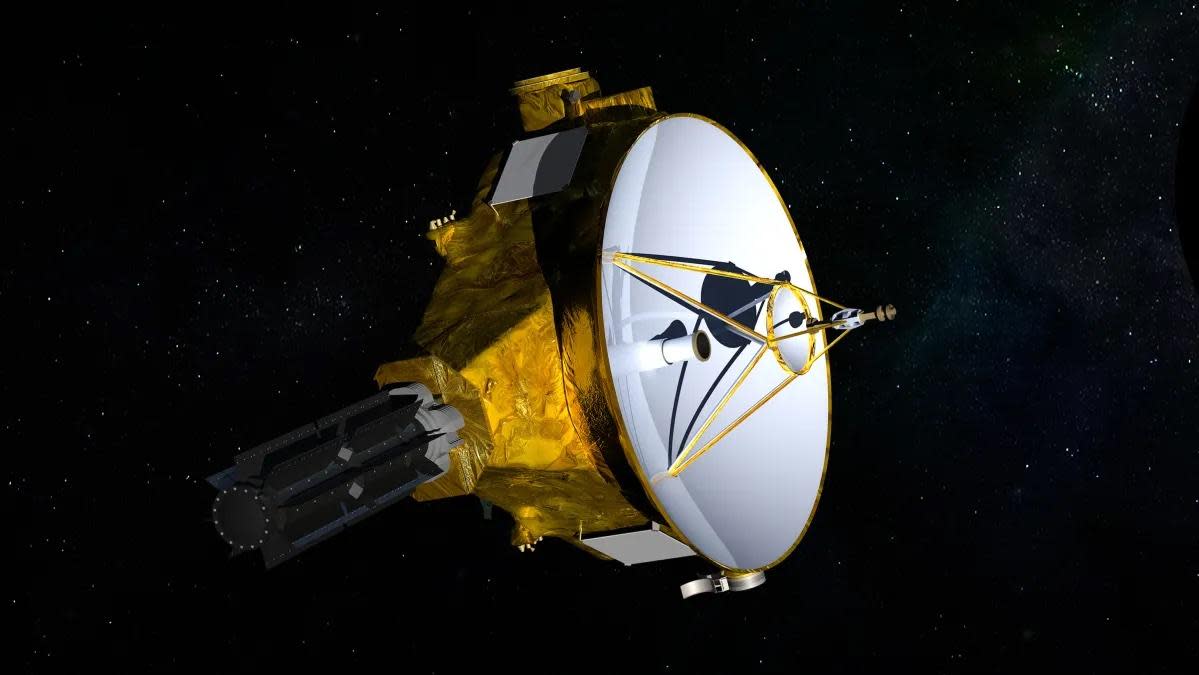Pluto-Visiting New Horizons Probe Gears Up for Extended Outer Solar System Mission

An illustration of the New Horizons spacecraft.
A famous NASA spacecraft will continue exploring the outer reaches of the solar system thanks to an extended lifeline. This decision overturns NASA’s earlier proposal to change the mission’s course and transfer it to a different division.
NASA has decided to extend its New Horizons mission until the spacecraft exits the Kuiper Belt, which is expected to take place as early as 2028, the space agency announced. The mission was originally scheduled to wrap up operations at the end of 2024.
Read more
Trump Lawyer Sports Gamer Laptop At $250 Million Fraud Trial
Youtuber Jailed On Piracy Charges Has 57-Vehicle Collection Auctioned Off By Feds
I Just Can't Get Past How Bad Door Handles Look On The New Z
In January 2022, NASA put together a review panel to go over a proposal by the mission’s science team to extend it by an additional three years. The space agency decided to extend the mission for two years instead and fund New Horizons as a planetary mission until 2024, while considering funding it as a heliophysics mission beginning in 2025. The decision was met with uproar from the science community, who argued that the spacecraft’s unique position in the far stretches of the solar system allows it to observe the mysterious objects of the Kuiper Belt while also studying the Sun.
“Following a senior review and feedback from a diverse set of stakeholders, NASA will continue the NASA New Horizons mission focus on multidisciplinary science,” Nicola Fox, associate administrator of science at NASA, wrote on X.
The new, extended mission will be primarily funded by NASA’s Planetary Science Division and jointly managed by NASA’s Heliophysics and Planetary Science Divisions, the space agency wrote.
The Kuiper Belt is filled with hundreds of millions of objects, of which New Horizons has so far explored 37. The spacecraft was also the first to visit Pluto in July 2015, conducting the farthest flyby in history. In 2019, New Horizons visited its next flyby target, a primordial binary object that was later named Arrokoth (which is Native American for sky). The New Horizons team is currently looking for a second flyby object, and planning observations of Saturn and its moons.
For more spaceflight in your life, follow us on X (formerly Twitter) and bookmark Gizmodo’s dedicated Spaceflight page.
More from Gizmodo
Ford To Cancel All Dealer Stock Orders Of The 2023 F-150 Lightning After Quality Control Check
Matty Healy Pledges to 'Do Better' and Asks Crowd to Applaud His Apology
Everyone agrees: Humanity peaked with U2’s first performance at the Las Vegas Sphere
Hankook's All-Seasons Embarrass Most Dedicated Winter Tires In Comparison Test
Sign up for Gizmodo's Newsletter. For the latest news, Facebook, Twitter and Instagram.

